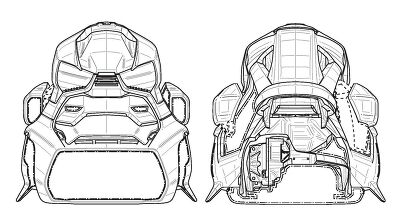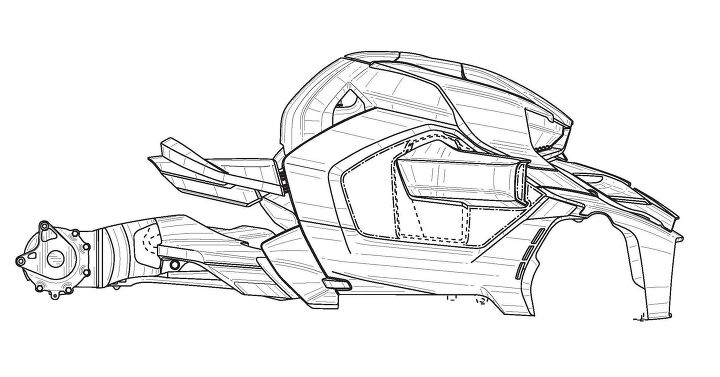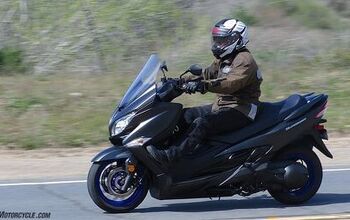New Can-Am Spyder Design Revealed in Patent Filings

Could the more aggressive design be called the Can-Am Spyke?
Bombardier Recreational Products has filed for patent designs for what appears to be a new Can-Am Spyder. The patents, at least five in all, show various aspects of the vehicle’s bodywork. They were filed on March 20 with the European Union Intellectual Property Office, but only published and fully registered today.
The new design has much sharper edges than the current Spyder models and looks somewhat like the lovechild of a Ducati Diavel and a snowmobile. The side body panels look a little like those on the discontinued Spyder RS model, but the large front grille looks like the one on the Spyder F3. The scoops on either side of the headlight unit also look similar to the F3 from the side, but the front view shows they are much narrower.
The Spyder F3 already has a fairly low seat height at 26.6 inches. The seat in the new design looks even lower, judging from how the fuel tank rises directly in front of it before sloping downwards. From the side views, there appears to be a gap running through the middle of the hump, and from the overhead view, there appears to be a small latch. There’s no sign of a fuel port, so it’s possible it’s hidden under this cover.
The swingarm appears to be a single-sided unit, which would be new to the Spyder line. Unfortunately, because the patents are only for the bodywork, we can’t see how the rear suspension system is connected. Existing Can-Am Spyders are belt-driven but studying the picture above, it’s plausible this could be shaft-driven, thus creating a virtually maintenance-free drive system, which would surely appeal to Spyder owners or the Spy-curious.
Above the swingarm, the design shows a solo seat but no tail, suggesting a bobber-inspired look. One of the other patents, however, appears to be a tail unit with panels that look like rear lighting, a plate holder and a spot for the BRP emblem. It’s hard to see how this would fit behind the low seat, however, and still leave enough clearance for the rear wheel.
Until now, BRP has kept a fairly simple nomenclature for its Spyder models. Since dropping the “Roadster” part of the name for 2013, Spyder models were identified by simple letter and number designations: RT, RS, and more recently F3 (plus various Limited, S or T variants). That may change with this new model, as BRP filed trademark applications in December with the U.S. Patent and Trademark Office for the names “Ryker” and “Spyke,” both for use for “recreational vehicles namely, three-wheeled motorized vehicles and structural parts therefor.” The USPTO found some potential conflicts with both names, actually suspending the application for the “Ryker” name. The USPTO also refused the application for the “Spyke” name, but is giving BRP the chance to argue its case or revise the filing.
There are a few important elements left out of the design. Apart from the wheels and suspension, there’s no indication where the hand controls are located. There are no openings in the bodywork to show how handlebars would connect to the front end. From the patent filings, we know there are at least two more elements that were filed but have yet to be revealed, so the answers may lie there. Another possibility is that this design is for a concept model with a more practical production model to come further down the line.
Hopefully, we’ll have some more information in the weeks to come. Check back here on Motorcycle.com for the latest details as it becomes available.

Dennis has been a part of the Motorcycle.com team since 2008, and through his tenure, has developed a firm grasp of industry trends, and a solid sense of what's to come. A bloodhound when it comes to tracking information on new motorcycles, if there's a new model on the horizon, you'll probably hear about it from him first.
More by Dennis Chung























































Comments
Join the conversation
This is all I can see... haha https://uploads.disquscdn.c...
I came across this. It's a German forum with murky pics of what appears to be a concept model from last year (pages 1, 3, and 4) https://www.spyderforum.de/...
Notably, the front wheel are placed AHEAD of the nose.